#2nd violin trio
Text
Sua vain yli kaiken mä rakastan 😭
Music: Vaasan kaupunginorkesteri 2nd violin trio "Romanssi" (2020)
Such a miracle does exist on TikTok
#anders als die andern#different from the others#conrad veidt#fritz schulz#reinhold schünzel#vaasan kaupunginorkesteri#2nd violin trio#romanssi#romance#weimar cinema#german cinema#silent movie#lgbtqia#queer cinema#fanvid#tiktok#sentimental overdose#own video#own post
58 notes
·
View notes
Text

Isolabella Duvessa Tsukii
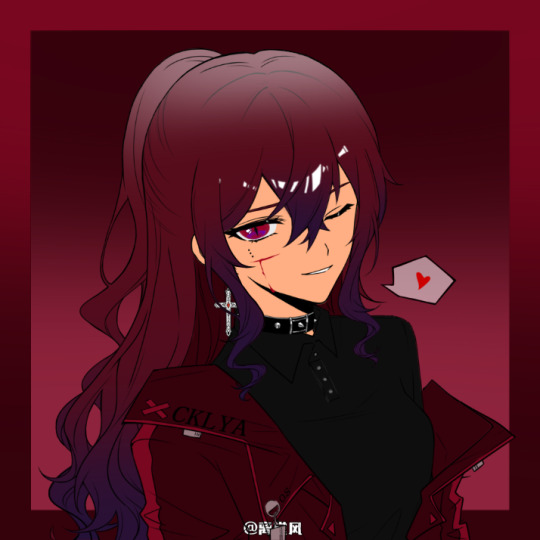

Name: Isolabella Duvessa Tsukii(She still prefers to be called Tsukii)
Romaji: Tsukii Duvessa Isolabella
Quote: "It is always a pleasure to break someone's ego for pettiness.."
V/A: Eirene from Path to Nowhere(Japanese), Stargazer from Path to Nowhere(English), and Oak Casket(when her sadist side appears and in both Eng and JP)
Gender: Female
Sexuality: Pansexual
Age: 21
Birthday: January 23rd
Zodiac Sign: Aquarius
Eye color: Crimson red with purple hue
Hair Color:Dark burgundy red hair with dark purple ends
Height: 5'7
Weight: 102 lbs
Race: Undead vessel(Irl wise: She is Bi-Asian)
Homeland: Yokohama, Japan
Family: A CEO father, a college teacher mother, 4 older brothers with no sisters
School Status and Fun Facts
Dorm: Sapphire Lake Dorm
School Year: 2nd year
Class: 2-B
Student Number: No.23
Occupation: A DJ and babysitter after school
Club: Light Music Club
Best Subject: History and Flying(in NRC), Music and gym(in Yuu's world)
Favorite Color: dark and pastel colors
Favorite Food: sweets, homemade food, and some food Jamil made(which she had Dawn steal for her due to her and Jamil having that silent beef towards each other)
Least Favorite Food: Maggot cheese, Liver, and Lilia's cooking,
Likes: alone time, reading, coffee + tea, rainy days, walking around in the cold, the night sky, stargazing, RSA(she will never understand the relationship between NRC and RSA), dad jokes, music, her friends and family, keeping secrets
Dislikes: Crowley, loud noises, Ace's boldness, losing her temper, her bad moods, seeing her objects went missing, Octo Trio(she only tolerates them), some of the members from different dorms boss her around, Sebek's yelling, Rook
Hobbies: dance and play the violin in the rain
Talents: Room reader, empathetic, knows someone is lying by a glance
Nicknames: Tsu-Tsu(the Libya twins and Jeanne), the silent bookworm(Jamil), La princesse des esprits or La déesse des esprits(Rook)
Other Nicknames: Psycho(family only), white rose(childhood nickname)
Appearance and Personality
Appearance: she had long dark burgundy hair that had dark purple ends, her eyes are crimson with a mix of purple. She had a light tan skin with a few scars here and there. But her signature items are a cross earring,her choker, and her fingerless gloves
Personality: Reserved with a sadistic side is what people describe Tsukii in her personality. She is very reserved and secretive with her family and past. It never helps since Tsukii is an ambivert(she leans more into an introverted side). Due to this, people often thought that Tsukii would let people push her around but she doesn't. She is bold and harsh with her words. She is a fighter and feisty plus she is a lot confident with herself after years of being pushed around because of her silence.
𝑻𝒓𝒊𝒗𝒊𝒂
Her um is Spirit's cries and Hallucinations
She used to wear glasses but not anymore
She still never got used to praises and compliments
Multilingual but chooses certain languages for certain people
She is a younger sister of Blood Rose(aka Akeldama Tsukii)
She is more..sadistic with her words than actions
In middle school: She has a violent streak when she is pushed past her limits.

11 notes
·
View notes
Text
how i got into the composers that i listen to and or play frequently
Bach: My dad has most if not all of his no accompanist violin thingies i forgot what theyre called on his phone and he would play them a lot around the house. Aaaaaaand he's my piano teacher's favorite composer so I learned i think 5-6 of his inventions and uhh Bach competition and then it turns out my violin teacher is also trained in Bach so uhh yeah. Also his stuff is really fun to play on the piano
Mozart:
forced to play Mozart. He's more fun on the violin than the piano but for some reason my sense of rhythm just disappears the moment that I see his sheet music
Beethoven:
my teacher's teacher's teacher's teacher's uhhh et cetera was Beethoven. I don't know how and I don't know how far back but it makes sense but Im not gonna dox myself so Imma not explain. Also for some reason to stop me from having an anxiety attack my parents would play his 5th symphony 1st movement and I would calm down??? I also saw his 5th symphony live once it was amazinggg and idk when i first listened to 9th 2nd movement but I like that one. Timpanis go brr. I also played one of his piano sonatas and it was so fun I love it
Chopin: okok two reasons
1. my cousin forced me to sight read his nocturnes and other excerpts from literal jpeg images off of his phone when I was like 11 and told me to learn more of his pieces bc apparently he was the best composer to him
2. my friend with perfect pitch pretended to have a gay crush on him for like an entire school year and he ended up teaching me one of the runs in the Waltz in C# minor
Liszt:
well first of all, im teaching myself Hungarian Rhapsody No. 2 because I was specifically told by my piano teacher last week that he wouldnt teach me Liszt at all so I was like fine ill do it myself reality can be whatever i want. But before that, friend with perfect pitch was learning La Campanella and wouldnt shut up abt it so I tried it out and I was like ooooooo jumps are fun
Shostakovich:
His Jazz Suite is literally my childhood my dad would play his Waltzes a lot growing up haha. And I was in a Shosty piano trio once but we only played one piece :( and I started listening to his symphonies bc orchestra director likes them and i want to get on his good side ahfkljsd; but i also really like them so it's all gud
now, as you can see how short this lis(z)t is (haha im so funny), i really need to listen to other stuff so uhh if anyone has any piece recommendations ill take them! /nf
#ok i do listen to other composers but like a few of their pieces not a lot#IN MY DEFENSE I LISTEN TO TOO MANY MUSIC GENRES TO KNOW A LOT ABT ONE SPECIFIC ONE#classical music#bach#mozart#franz liszt#dmitri shostakovich
13 notes
·
View notes
Note
music rec for gaster and abby: are you familiar with Brahms? different than rach 2 but similarly lush romantic sound, almost nostalgic and also frighteningly massive, similar sense of nobility n chivalry throughout. Brahms symphonies are all gorgeous, another favorite is his piano trio op 1. And of course I'm partial to the violin concerto, 1st and 2nd movements especially. Tempted to recommend listening to my own performance lmaoo but that's a little egotistical i think. hillary hahn does it really well, and heifetz of course although his first movement is a bit fast and it takes away some of the gradeur. You really can't go wrong i think
ooh thank u for the recommendations! i’ll have to check em out, in all honesty i am not familiar with brahms at all past the infamous lullaby ofc hahah
8 notes
·
View notes
Text
Feb. 26th - Solo Set + Phil Niblock - Fridman Gallery/New Ear Festival - 169 Bowery, NYC
March 2nd - Solo Set - PG Six Reissue Release + Che Chen + Anaïs Maviel at Shift - 411 Kent Ave. BK, NYC
March 18th - Trio W/Che Chen & Chris Corsano + Ka Baird/Chris Williams at Sundownstairs - Queens, NY
March 25th - Duo W/Spencer Herbst + Richard Hoffman at Sunview Luncheonette - 221 Nassau Ave., BK, NY
April 1st - Duo W/Marcia Bassett + Masaaki + Frank Hurricane at Secret Project Robot - 401 Wythe Ave, BK, NY
May 17th - Trio W/Chris Corsano and Che Chen - Sisters - Brooklyn, NY
May 19th - Solo Violin + Helen at Union Pool - Brooklyn, NY
May 26th - Duo W/Marcia Basett + Wednesday/Kryssi + Thee Holy Oakes - Hutghi’s at The Nook - Westfield, MA FREE - 5pm
May 27th - Duo W/Marcia Basett + Wednesday/Kryssi - Clark Art Museum/ presented by Bell Tower Records - Williamstown, MA Late afternoon show.
May 28th - Duo W/Marcia Basett + Annie Dodson - Tubby’s - Kingston, NY
1 note
·
View note
Video
youtube
One Note Samba with Natália Spadini Trio + 1
Great show last night with Natália Spadini Trio + Diego Mondragón (violin) sitting in. This was our 2nd concert of the series "Brazilian & Latin Jazz at The Merc", every third Friday of the month. Next one is on November 18th (more information soon)
0 notes
Video
youtube
LEONE SINIGAGLIA (1868-1944) Intermezzo, 2nd movement of Serenade op.33 for String Trio
ENSEMBLE ALRAUNE : Clara Franziska Schötensack, violin Stefano Zanobini, viola Augusto Gasbarri, cello
0 notes
Photo

✧ Park Byeolha, also known as Bea Park, was born in London, England on 11th November 1999. Her parents are both teachers and she is their only child. She was a quiet and sensitive child with a deep love for music, something that was heavily encouraged by her mother, a music teacher who taught her how to play both the piano and the violin. Byeolha’s love of poetry and writing, coupled with her love of music led to her writing and composing her own songs. She learned how to play both bass and guitar, and while her singing voice wasn’t the best it was decent.
She’d grown up listening to kpop and was a huge girl group stan, loving ones from the 2nd gen in particular. Byeolha loved not only the music but their outfits and how pretty the girls were; she was a huge fan of Halcyon, a very successful trio under Nostos Entertainment. Byeolha started to dream of a day where she would be a kpop idol; this was always intended to only be a dream, as realistically she never thought she’d be given the opportunity let alone be successful. When visiting family in South Korea she offhandedly mentioned to her mother that Nostos Entertainment was holding auditions. Her mother encouraged her to take the chance and audition which she did, despite feeling like she would never be good enough.
She was good enough and Byeolha got accepted into Nostos Entertainment in 2016. She dropped out of her A-Levels and moved to South Korea by herself in order to become a trainee. Byeolha struggled greatly with this, as she is extremely close to her parents, however, they did their best to support her even from afar, as they knew becoming an idol would make her happy. Her parents would come to South Korea at every possible opportunity in order to spend time together and ensure that she wasn’t too lonely.
During her short time as a trainee, Byeolha bonded almost immediately with fellow member, Yujin, seeing Yujin as a surrogate sister of sorts. The pair became extremely close in a short period of time, with Yujin even inviting Byeolha to spend holiday seasons with her family, as Byeolha could not go home to see her own.
Byeolha debuted as the main rapper of MILKYWAY in 2017 under the name ‘Byeol’.
✧ info
STAGE NAME:: Byeol | 별
FULL NAME:: Bea Park | Park Byeolha | 박별하
BIRTHDAY:: 11th November 1999
HEIGHT:: 5′4 | 164cm
HOMETOWN:: Golders Green, London, United Kingdom
ETHNICITY:: Korean
NATIONALITY:: British
EDUCATION:: BA English Student
LANGUAGES:: English, Korean
✧ career
PROFESSION:: Idol, MC
AGENCY:: Nostos Entertainment
TRAINING PERIOD:: 2016 - 2017
YEARS ACTIVE:: 2017 - Present
GROUP:: MILKYWAY
POSITION:: Main Rapper, Vocal, Maknae
#deluxeocnet#`☆ « my imagination becomes the universe » — byeol#fictional idol oc#fictional idol community#idol oc
9 notes
·
View notes
Text
JUMP Dance Convention, Baltimore, MD: RESULTS
High Scores by Age:
JUMPstart Solo:
1st: Natalie McCue-’In Your Head’
2nd: Ja’Khari May-’Kiss Kiss’
3rd: Parker Zaicko-’Dreams to Dream’
3rd: Sadie Cuiksa-’Pony Tail’
4th: Vivien Wease-’Here Comes The Sun’
5th: Harlin Davis-’Working Day and Night’
6th: Hadley Everson-’Confident’
7th: Zooey DeYoe-’Whip It’
8th: Isabelle Glanville-’Her Dream’
Mini Solo
1st: Ellie Melchior-’Function’
1st: Kya Massimino-’I Go Crazy’
1st: Barrett Robison-’Ping’
2nd: Camryn Studebaker-’When Everything Fades’
3rd: Katherine Khait-’Aura’
3rd: Lily Planck-’She’s A Lady’
4th: Arabella Keller-’Marathon’
4th: Mya Fernandez-’What A Wonderful World’
5th: Santiago Sosa-’Becoming’
6th: Melania Khait-’I Dreamed A Dream’
7th: Kendal Llaneza-’Come and Get Your Love’
8th: Parker Adair-’New Attitude’
8th: Farrah Long-’Say Something’
9th: Marina Snyder-’Big Time’
10th: Alex Wisniewski-’Carry You’
10th: Addison Bleicher-’Growing Pains’
10th: Lyla Norby-’Little Bird’
10th: Charlotte Hale-’The Little Ballerina’
Junior Solo
1st: Ava D’Ambrosio-’Remembrance’
1st: Cameron Voorhees-’Unplug’
2nd: Emmeline Gerardi-’In The Middle of This Nowhere’
3rd: Kate Riordan-’Absence’
3rd: Xyla Maddox-’Ain’t No Sunshine’
3rd: Ava Buckhalt-’Time After Time’
4th: Mariah Barbee-’Creation’
5th: Nadia Wilde-’Goodmorning Midnight’
5th: Nadia Gift-’Hound Dog’
5th: Francesa O’Brien-’The Stars’
6th: Scarlet Sperry-’In Roses’
6th: Addison Cullather-’Tangent’
7th: Lexi Pawelchak-’Red Violin’
7th: Natalie Hoffman-’She Remembers’
7th: Ava Leahey-’The White Light’
8th: Gabrielle Schetelich-’I Am Your Shadow’
8th: Daniella Sanchez-’Pulse’
8th: Lyla Ferguson-’Sincerely Jane’
8th: Bella Rose Penrose-’Spine’
9th: Luna Powell-’1977′
9th: Braelyn Ramseyer-’Clumsy’
9th: Evie Parish-’Fireflies’
9th: Chloe Hyatt-’Smokey Taboo’
10th: Camdyn Fry-’Arch Angel’
10th: Meriko King-’Dirty Diana’
10th: Madeline Anderson-’Eternally Yours’
10th: Sadie Ruane-’I Feel For You’
10th: Brooke Marshall-’Maybe We’ll See’
Teen Solo
1st: Ellen Grace Olansen-’Ghost’
2nd: Hannah Sullivan-’Exhale’
2nd: Ava Wease-’My Future’
2nd: Natalia Wazio-’The Gift’
3rd: Makenzie Hill-’Gimme All Your Love’
4th: Maddy Collins-’Distortion’
4th: Kennedi Washington-’Epilogue’
5th: Ava Carroll-’Are You Sure’
5th: Ayla Flowers-’The Waiting Room’
6th: Madison Marshall-’Icon’
6th: Elyse Wingertsahn-’Love Me Tender’
6th: Gillian Gordon-’Ungathered’
7th: Toryn Hester-’Freak On’
7th: Ava Paliotta-’I Would Give My Breath Away’
7th: Taylor Fry-’Moonlight’
7th: Logan Speer-’Tripped Out Slim’
8th: Victoria Reith-’Departures’
8th: Madelyn Beckman-’Vow’
8th: Nyah Lastrapes-’We Never Saw It Coming’
8th: Ava Raucci-’When Things Fall Apart’
9th: Shay Kaminski-’Love and Respect’
9th: Kate Petrilli-’Neglected Space’
10th: Lily Shirley-’Aloha Friday’
10th: Olivia Schetelich-’Elegy’
10th: Renee Bergeron-’Inside’
10th: Julissa Ortiz-’Never Knock’
10th: Olivia Bowman-’Valis’
Senior Solo
1st: Caden Hunter-’Bionic’
1st: Kayla Mak-’Tuesday’
2nd: Gionna D’Alessandro-’Wish You Were Here’
3rd: Emma Cook-’Unputdownable’
4th: Kylie Chamberlain-’For All We Know’
4th: Angelina Velardi-’Mercy’
4th: Paloma Santos-’My Baby Shot Me Down’
5th: Savannah Quiner-’Escape’
5th: Carly Futrick-’Seduces Me’
5th: Annalise Hofman-’She Comes and Goes’
5th: John Chappell-’Shell’
6th: Cassidy Reigel-’16 Tons’
6th: Raegan Himmelwright-’At Your Doorstep’
6th: Wesley Cloud-’Don’t Leave Me Now’
6th: Emma Simons-’Lilac Wine’
6th: Melina Dalton-’Mangos’
6th: Bayler Glenn-’Undertow’
6th: Brianna Brickerd-’We Were Sparkling’
7th: Sophie Verrecchia-’Passing Memory’
7th: Bethany Grzymala-’Wrong Direction’
8th: Yana Sologub-’A New Day’
8th: Cailey Solano-’Before My Time’
8th: Rayna Tyler-’Embraceable You’
8th: Annie Adams-’Lady’
8th: Lauren Mendes-’Machina’
9th: Breanna Ottinger-’Par Amour’
9th: Samantha Zgombic-’Woah’
10th: Taylor Mitcham-’Faith’
10th: Brooke Manchester-’Go’
JUMPstart Duo/Trio
1st: Valley Dance Theatre-’Together’
Mini Duo/Trio
1st: C-Unit Studio-’Rich Girls’
2nd: C-Unit Studio-’Rainbow’
3rd: C-Unit Studio-’Knock On Wood’
Junior Duo/Trio
1st: Turning Pointe Dance Academy-’Moonlight’
2nd: SI Dance LLC-’Small Leaf’
3rd: Turning Pointe Dance Academy-’Nightmare’
Teen Duo/Trio
1st: RPM Dance-’I Wish’
2nd: RPM Dance-’Friends’
3rd: Valley Dance Theatre-’MAY’
Senior Duo/Trio
1st: Prestige Academy of Dance-’New York is A Desert’
2nd: Savage Dance Company-’Fade Into You’
3rd: PowerUp Dance Center-’The Wisp Sings’
JUMPstart Group
1st: ZD Dance Academy-’Tutti Frutti’
2nd: ZD Dance Academy-’Who Let The Frogs Out’
Mini Group
1st: Encore Studio-’Uptown Girl’
2nd: Encore Studio-’Windowdipper’
3rd: C-Unit Studio-’On Fire’
Junior Group
1st: C-Unit Studio-’Bugaboo’
2nd: Denise Wall’s Dance Energy-’Song For A Friend’
3rd: C-Unit Studio-’Funkytown’
Teen Group
1st: Encore Studio-’Kinjabang’
2nd: Valley Dance Theatre-’Arms Outstretched’
3rd: PowerUp Dance Center-’Cessation’
3rd: C-Unit Studio-’Ladies’
Senior Group
1st: Denise Wall’s Dance Energy-’Fade’
2nd: Denise Wall’s Dance Energy-’I Feel Pretty Perplexed’
3rd: C-Unit Studio-’At 17, 20 & 27′
JUMPstart Line
1st: Encore Studio-’Conga’
Mini Line
1st: Encore Studio-’Truth’
2nd: Valley Dance Theatre-’Ease On Down’
Junior Line
1st: Encore Studio-’Turn to Stone’
2nd: Turning Pointe Dance Academy-’Seasons’
3rd: Denise Wall’s Dance Energy-’We Get’s Up’
Teen Line
1st: Denise Wall’s Dance Energy-’Mack the Knife’
2nd: C-Unit Studio-’Gimmie Dat’
3rd: Denise Wall’s Dance Energy-’House of Sails’
Senior Line
1st: Denise Wall’s Dance Energy-’After Dark’
2nd: Denise Wall’s Dance Energy-’Maybe It’s Just Me’
JUMPstart Extended Line
1st: ZD Dance Academy-’At The Playground’
Mini Extended Line
1st: Denise Wall’s Dance Energy-’I Just Wanna Be Happy’
2nd: Encore Studio-’Vibeology’
Junior Extended Line
1st: Denise Wall’s Dance Energy-’My Dearest Friend’
2nd: Encore Studio-’Ice Me Out’
Teen Extended Line
1st: C-Unit Studio-’Love Shack’
1st: Denise Wall’s Dance Energy-’Vibeology’
2nd: Denise Wall’s Dance Energy-’Still’
3rd: C-Unit Studio-’Wanted’
Teen Production
1st: Encore Studio-’Cardi’
2nd: RPM Dance-’Once On This Island’
High Scores by Performance Division:
JUMPstart Jazz
1st: Encore Studio-’Conga’
JUMPstart Hip-Hop
1st: ZD Dance Academy-’At The Playground’
JUMPstart Tap
1st: ZD Dance Academy-’Tutti Frutti’
JUMPstart Acro
1st: ZD Dance Academy-’Who Let The Frogs Out’
Mini Jazz
1st: Encore Studio-’Uptown Girl’
2nd: Denise Wall’s Dance Energy-’I Just Wanna Be Happy’
3rd: Encore Studio-’Vibeology’
Mini Hip-Hop
1st: C-Unit Studio-’On Fire’
2nd: RPM Dance-’Unity’
Mini Tap
1st: RPM Dance-’Sunday Best’
2nd: C-Unit Studio-’Happy’
Mini Contemporary
1st: Encore Studio-’Windowdipper’
2nd: Encore Studio-’Truth’
Mini Musical Theatre
1st: Valley Dance Theatre-’Ease on Down’
Junior Jazz
1st: C-Unit Studio-’Funkytown’
2nd: Encore Studio-’It’s About That Walk’
3rd: Denise Wall’s Dance Energy-’We Get’s Up’
Junior Ballet
1st: Denise Wall’s Dance Energy-’Springtime Waltz’
2nd: Turning Pointe Dance Academy-’Andante Affetuoso’
Junior Hip-Hop
1st: Encore Studio-’Ice Me Out’
1st: C-Unit Studio-’Bugaboo’
2nd: DanceWorx Dance Company-’Flawless’
Junior Tap
1st: Denise Wall’s Dance Energy-’My Dearest Friend’
2nd: C-Unit Studio-’Love’
Junior Contemporary
1st: Encore Studio-’Turn to Stone’
2nd: Turning Pointe Dance Academy-’Hound Dog’
2nd: C-Unit Studio-’Rowboats’
3rd: Turning Pointe Dance Academy-’Summer’
Junior Lyrical
1st: Denise Wall’s Dance Energy-’Song For A Friend’
2nd: Turning Pointe Dance Academy-’Seasons’
3rd: Turning Pointe Dance Academy-’I Will Always Love You’
Teen Jazz
1st: Denise Wall’s Dance Energy-’Vibeology’
1st: C-Unit Studio-’Love Shack’
2nd: Encore Studio-’Just Say’
3rd: Encore Studio-’Shake and Pop’
3rd: C-Unit Studio-’Ladies’
Teen Ballet
1st: Denise Wall’s Dance Energy-’Apres Minuit’
Teen Hip-Hop
1st: C-Unit Studio-’Gimmie Dat’
2nd: C-Unit Studio-’Wanted’
3rd: Denise Wall’s Dance Energy-’Tell ‘Em’
3rd: Encore Studio-’Yikes’
Teen Tap
1st: Denise Wall’s Dance Energy-’House of Sails’
2nd: Encore Studio-’Cardi’
3rd: RPM Dance-’Only A Fool’
Teen Contemporary
1st: Encore Studio-’Kinjabang’
2nd: Valley Dance Theatre-’Arms Outstretched’
2nd: Encore Studio-’Sadness’
3rd: Turning Pointe Dance Academy-’Eleanor Rigby’
3rd: Encore Studio-’Awake’
3rd: PowerUp Dance Center-’Cessation’
Teen Lyrical
1st: Denise Wall’s Dance Energy-’Still’
2nd: Turning Pointe Dance Academy-’Vienna’
3rd: Turning Pointe Dance Academy-’Jolene’
Teen Musical Theatre
1st: Denise Wall’s Dance Energy-’Mack the Knife’
2nd: RPM Dance-’Hamilton’
3rd: RPM Dance-’Once On This Island’
Teen Specialty
1st: C-Unit Studio-’Rhapsody In Black and White’
2nd: Turning Pointe Dance Academy-’My Way’
3rd: Turning Pointe Dance Academy-’Ghostbusters’
Senior Jazz
1st: Denise Wall’s Dance Energy-’Fade’
1st: Denise Wall’s Dance Energy-’Maybe It’s Just Me’
2nd: RPM Dance-’Trust’
3rd: Show Tyme Academy-’What Kind of Man’
Senior Tap
1st: Denise Wall’s Dance Energy-’I Feel Pretty Perplexed’
2nd: C-Unit Studio-’Don’t Stop Me Now’
3rd: Ovations Studios-’Lean On’
Senior Contemporary
1st: Denise Wall’s Dance Energy-’After Dark’
2nd: C-Unit Studio-’At 17, 20 & 27′
3rd: Denise Wall’s Dance Energy-’All Those Things You Told Me To Wait For’
Senior Specialty
1st: Show Tyme Academy-’Only An Expert’
2nd: DanceWorx Dance Company-’Dream State’
Best of JUMP:
JUMPstart
ZD Dance Academy-’At The Playground’
Encore Studio-’Conga’
Mini
C-Unit Studio-’On Fire’
Denise Wall’s Dance Energy-’I Just Wanna Be Happy’
Encore Studio-’Uptown Girl’
Junior
C-Unit Studio-’Bugaboo’
Encore Studio-’Ice Me Out’
Denise Wall’s Dance Energy-’My Dearest Friend’
Turning Pointe Dance Academy-’Seasons’
Teen
Denise Wall’s Dance Energy-’Mack the Knife’
Encore Studio-’Kinjabang’
Valley Dance Theatre-’Arms Outstretched’
PowerUp Dance Center-’Cessation’
RPM Dance-’Hamilton’
Turning Pointe Dance Academy-’Eleanor Rigby’
C-Unit Studio-’Gimmie Dat’
Senior
C-Unit Studio-’At 17, 20 & 27′
Denise Wall’s Dance Energy-’After Dark’
Best In Studio:
Turning Pointe Dance Academy-’Eleanor Rigby’
C-Unit Studio-’Gimmie Dat’
DanceWorx Dance Company-’Dear Anxiety’
Denise Wall’s Dance Energy-’After Dark’
Encore Studio-’Uptown Girl’
RPM Dance-’Hamilton’
Show Tyme Academy-’What Kind of Man’
4 notes
·
View notes
Photo



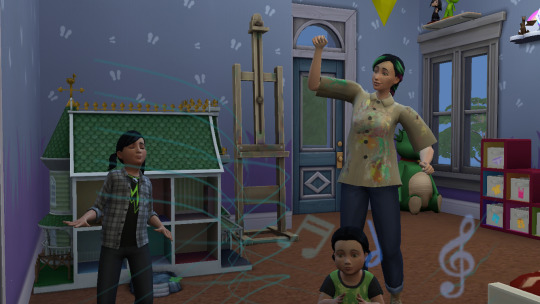
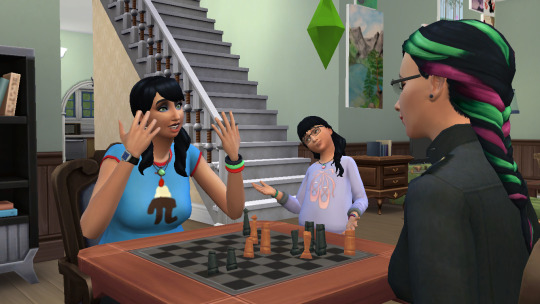
My Sims4 ladies so far
- Norma Whitaker - (started as YA, now adult) Matriarch, the start of this legacy line. Current look inspired by @dollsahoy and @gothiccharmschool.
I love that they updated the game to let any sim wear masc and femme clothing. This is a masculine jacket, but it goes so well with a long skirt. (Don’t mind the spiked choker poking through the collar, oops)
- Bailey Whitaker - (born in-game, now teen) First sim born in the game. I would adjust the chin area if I could, but I really love her face otherwise, especially her nose (from her dad, Flynn). [I’ve looked up the CAS cheat since drafting this post. Will post results later.] I didn’t expect her hips to be that wide; that was not planned, but it’s def from her mom.
She’s gonna be an astronaut, so this pi shirt is great. I wore similar stuff in high school. Kinda punk-pop aesthetic of the early-to-mid 2000s, before emo/scene fashion hit hard.
- Alissa Whitaker - (born in-game, now child) 2nd-born, more pinks and purples in her wardrobe. She’s going to be a musician, playing the violin for now.
Alissa aged up to a child the day before Bailey went from child to teen, so I got to see them both in the child age-stage. Comparing her to Bailey as a child, only their eyes were different; I expect the body genetics to be similar, too.
-------------------
Last to pics are of the trio together. 2nd-to-last was everyone dancing. (Norma was wearing her painter-job outfit.) Last pic was chess, as both Norma and Bailey needed the skill points. Alissa was alone (the dad was at work), so she watched and chatted.
I’ve been playing for ages now, but I’ve forgotten Flynn’s surname. Wait, it’s Bradford. Haven’t taken screenshots of him or more-detailed ones of Alissa yet. I’ve been too wrapped-up in getting them skill-points, haha.
6 notes
·
View notes
Text
2023 Tumblr Top 10
1. 334 notes - May 10 2023
Let's sign Cha Cha Cha with Käärijä MIGUEL💜 on TikTok
2. 173 notes - Mar 14 2023
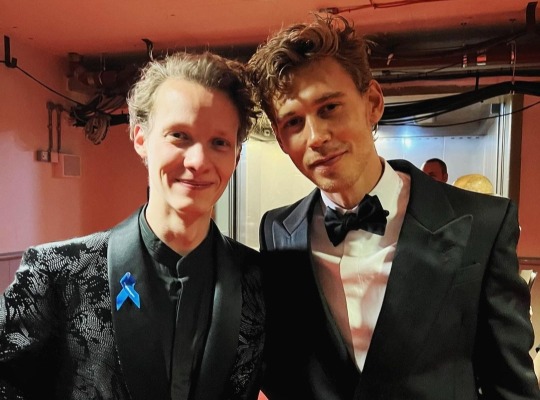
3. 159 notes - Apr 1 2023
Evolution of Conrad Veidt 🎬 Thanks @matthew-garth for suggesting the idea and music 🫰🏻 Such a miracle does exist on TikTok
4. 63 notes - May 8 2023

5. 60 notes - May 8 2023
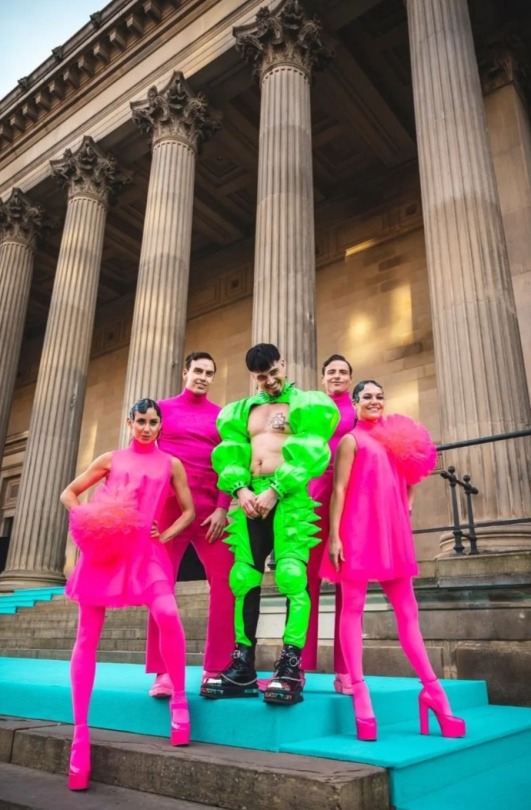
6. 49 notes - Apr 27 2023
Sua vain yli kaiken mä rakastan 😭 Music: Vaasan kaupunginorkesteri 2nd violin trio "Romanssi" (2020) Such a miracle does exist...
7. 46 notes - Feb 11 2023
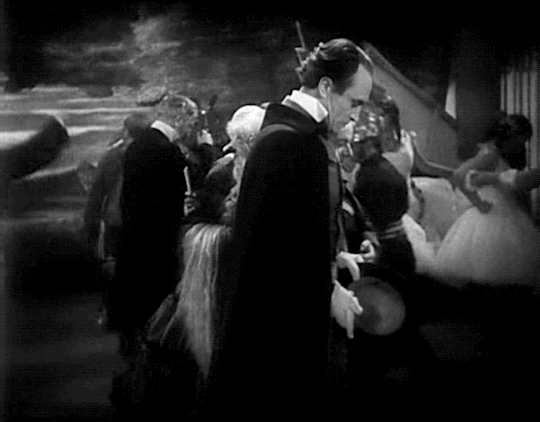
8. 44 notes - Aug 8 2023

9. 43 notes - Jun 9 2023
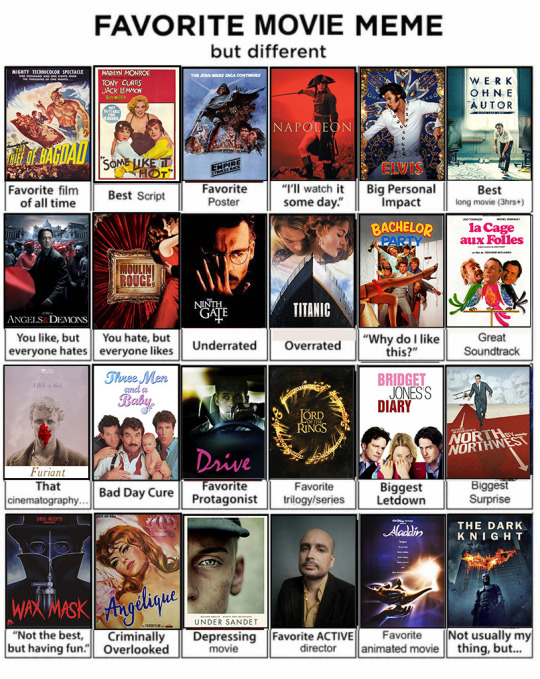
10. 42 notes - Oct 19 2023
Ancora 💋 Music: Mina ”Ancora ancora ancora (Mark Ronson Remix)” (2023)
Created by TumblrTop10
#tumblrtop10#2023 tumblr top 10#unofficial my year in review#käärijä#miguel💜#felix kammerer#austin butler#bafta 2023#conrad veidt#lyhdynkantajat#kivimiehet#stone men#eurovision song contest#eurovision song contest 2023#polls#das boot#das boot 2018#das boot 2024#rick okon#klaus hoffmann#favourite movie meme but different#mina#ancora ancora ancora#2023 was crazy & party and heavy sad but lovely#own gif#own video#own post
11 notes
·
View notes
Text
Personal faves from Mendelssohn
Mendelssohn Piano trio no. 2 1st movement
Mendelssohn Cello sonata no. 2 1st movement
Mendelssohn Symphony no. 3 1st movement
Mendelssohn Symphony no. 4 1st, 4th movement
Mendelssohn Piano trio no. 1 1st movement
Mendelssohn String Quartet no. 6 1st, 2nd, 4th movement
Almost all of his 'songs without words'
Mendelssohn Violin concerto (in E minor) 1st, 3rd movement
Very typical
1 note
·
View note
Text
First Take Review: Valvet Soulshine Preamplifier & A4 Mk.II Amplifier
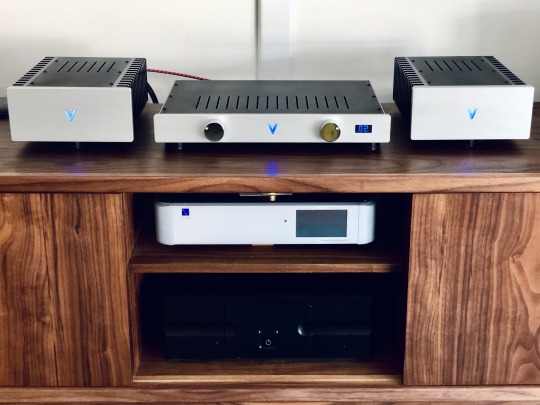
I stumbled upon the Valvet brand fairly randomly. Looking back at my original email to Alfred Kainz of highend-electronics, Valvet’s US distributor, it appears I caught wind of the niche German marque via a review of their E2 amplifier ($2,990) on 10audio.com. In it, Jerry Siegel compared it with some very well-respected solid state and tube competition - Pass, First Watt, Cary - and came away smitten with the musicality of the little 20-watter. I perused the rest of the Valvet line and was immediately drawn to how it blended sleek, unassuming styling with a focus on tried and true design approaches. Tube preamps with solid state amps (no Class D in sight), super quality passive parts, minimalist Class A and single-ended topologies, all in urban-lifestyle friendly packaging... Valvet was speaking my language. The relative obscurity of the brand (at least here in the States) and lack of online reviews only added to the intrigue. A review was clearly in order, and Alfred was kind enough to oblige us with the Soulshine tube preamp ($5,890 in the configuration we received) and A4 Mk.II monoblock amplifier ($7,890).
Alfred provided this description of the company:
Valvet is located in Bargteheide, in the north of Germany, near Hamburg. What we have here is a very consistent vision by designer Knut Cornils in design and execution. Knut founded the company in 1991 and has been building Class-A amps since 1982. Knut has evolved a distinctive architecture of Class-A modules using high-quality components in minimal designs, featuring valve pre-amplifiers with separate power supply and solid-state mono-block power amplifiers.
Valvet Soulshine Tube Preamp ($5,890)
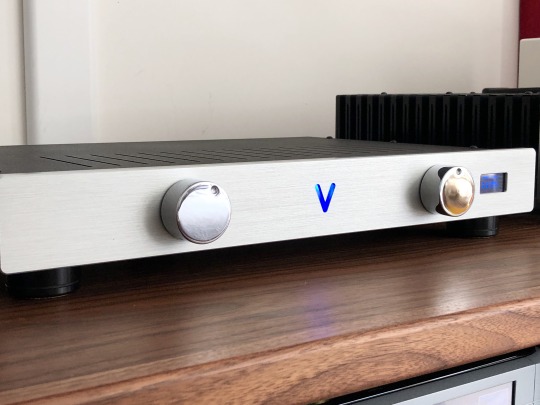
The Soulshine is Valvet’s top preamplifier line and comes in a number of configurations. The model we received is a line stage and includes a compact external power supply and stepped attenuator with remote control. Recently, two further upgrades became available: the Soulshine IIz ($8,890) featuring a dual-mono external supply, and the Soulshine Trio ($10,990) with built-in phono stage and quad supplies. @mgd-taww has the full review of our base configuration coming out imminently, but I'll share some observations from my time with the unit.
I really dug the sleek look of the Soulshine - super slender, with a minimalist front panel sporting two polished chrome knobs, a 2-digit volume display and the Valvet "V" softly glowing in blue. There's zero panel markings, which makes input selection a bit of a guessing game, and slightly odd is the fact that the free-spinning volume knob (it's a rotary encoder for the electronically-controlled attenuator) has a dimple to indicate position, despite it being completely uncorrelated with the actual volume setting. The attenuator itself works extremely well - volume control is a bit on the coarser side, definitely not 1dB across the range, but adjustments are quick, smooth and noiseless other than the gentle clicking of the internal relays. Best of all, the outputs are quickly muted to eliminate any possibility of transients on power-up or turn-off which can be a real hazard with tube designs. The back-panel features 4 inputs - 2 balanced XLR, 2 unbalanced RCA - and both RCA and XLR outputs. The power supply is external, connected with a light, flexible and detachable umbilical cord. Under the hood, the circuit is simple and the parts are high quality, with relatively neat hand-soldered point-to-point wiring (Teflon-sleeved silver in our model). Like any tube component, it'll need some room to breath, but it generates a fairly moderate amount of heat and will fit in shelves with less clearance than typical tube pre's with tall chassis and upright tubes.
Tonally I found the Valvet to be fairly nondescript, and I mean that in the best possible way. There is just a hint of extra juice in the mid-bass, and the low end isn't as extended and tightly-controlled as the solid-state Bryston BP-17 Cubed ($4,500), but otherwise things felt quite neutral and in order - another example of the convergence of tube and solid state tonality over time. The top end had clarity and extension and there was neither the upper-midrange forwardness nor the rolled-off treble that one sometimes gets with tubes.
What it did have was a uniquely singing tone in the midrange that made it particularly expressive with soft melodic passages. E.g. on a performance of the Rachmaninoff Romance by cellist Alicia Weilerstein [Tidal], a passionate rendition of the theme is followed by a pianissimo echo. Through the Soulshine, the delicate passage sounded wonderfully quiet and intimate, yet still expressive; on the Bryston it came across a bit threadbare and pale. Every once in a while this could also come across as a bit of thickening, like just a dash too much cornstarch in the sauce - e.g. with Magdalena Kozena's Mozart arias, the ethereal floatiness of her voice came across slightly more opaque than I heard with the Pass Labs XP10. Tradeoffs, tradeoffs...

Bryston BP-17 Cubed, Valvet Soulshine and Pass Labs XP10 locked in battle
I (or more accurately, my wife and I) heard a bit more editorializing going on with harmonics and timbre. One late evening I was playing some tunes on the Soulshine, Beethoven Symphony No. 2 to be precise, and my wife commented that the orchestra sounded rather sharp (pitch-wise) and nasal. Normally this is how American woodwind players describe European ensembles (who do indeed tune their A's higher and use totally different technique, reeds and often instruments). But in this case, it was a Montreal Symphony performance which she never previously commented on sounding particularly European. Switching back to one of the solid state pre's (the Bryston or Pass XP10) restored the expected timbre - her ears are particularly sensitive, and I can only surmise she was picking up on harmonic distortion being introduced by the tubed Soulshine. I could hear it as well, but to me it was pretty mild, and probably 99% of people won't notice it to the same degree.
The other area where THD may be coming into play is soundstaging. The Valvet has a healthy dose of that holographic tube feel, suspending instruments across a deep, airy and three-dimensional space... so much so that my wife actually felt the sound to be “too 3D,” something I doubt you’ll ever hear an audiophile say. Nelson Pass under his First Watt enterprise shared a design for a very simple 2nd-order harmonic distortion generator, called the H2, as a fun way to add some color to sound. He made this interesting observation about the phase of such distortion:
So why is the phase important? Well, it's a subtle thing. I don't suppose everyone can hear it, and fewer particularly care, but from listening tests we learn that there is a tendency to interpret negative phase 2nd as giving a deeper soundstage and improved localization than otherwise. Positive phase seems to put the instruments and vocals closer and a little more in-your-face with enhanced detail.
My sense was that the Soulshine adds more of the “negative phase” second harmonic - it has that deep holographic stage, without sounding up front and “technicolor” as some tube designs are wont to. Again, to my wife’s ears this effect sounded a little phasey and unrealistic, but I’m guessing many audiophiles will eat it up.
Some other notable and positive aspects of the Soulshine... it's extremely quiet, with nice black backgrounds. In fact, I found it to be nearly dead silent even when cranked to max volume, and considerably quieter than the Bryston which always had some level of audible hiss. Dynamics were strong, the Bryston capturing big hits in the bottom end with more slam and edge, the Valvet otherwise having more verve and nuance - piano in particular had great weight and presence on crescendi. There was a sense of ease, with plenty of headroom even on the loudest, most cacophonous orchestral passages, though I did find dynamics varied a bit with the volume setting, a likely consequence of placing the attenuator after the tube gain stages thus creating variable output impedance. Separation of instruments was excellent - whether listening to a small chamber ensemble or symphony orchestra, tonally-adjacent voices like viola vs. second violin came through with clarity and color. And while lesser preamps can blur the region below middle C (262Hz) into a bit of a soupy blend, the Soulshine clearly distinguished the lower registers of the cello from the left hand of piano accompaniment on sonatas.
All in all, the Soulshine struck me as a lovely and enjoyable preamp. Musically expressive and pure, it was significantly more engaging than the Bryston BP-17 Cubed, and made for an interesting counterpoint to the Pass Labs XP10 ($5,250 before being replaced by the XP12). I didn’t mention the Pass so far as @mgd-taww also uses the XP10 as his reference preamp, so I’ll let him do the honors of an in-depth comparison in his coming review.
Valvet A4 Mk.II Class A Monoblock amplifier ($7,890)
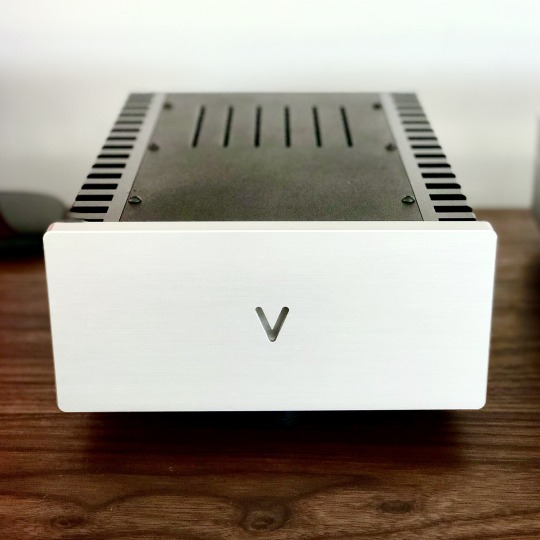
The A4 represents the 2nd generation of Valvet’s original Class A monoblock design, the A3.5. This latest “Mk.II” iteration includes 33% larger power transformers (400W), more filtering (132,000µF each!) and upgraded parts throughout including audiophile-brand resistors and cotton-insulated silver wiring. Allegedly this brings the performance of the Mk.II closer to Valvet's flagship A4e ($9,890), a souped-up 4-chassis model with larger external power supplies and a bit more power. Despite the Class A design, the A4 is downright petite, each monoblock measuring just 230 x 110 x 310 mm (9 x 4.4 x 12.2 inches) but feeling hefty and solid - I don’t have the weight on me, but you’ll definitely want to firmly grasp each one with two hands. Power is rated at 55 watts/8Ω, 90 watts/4Ω in full Class A operation. In what seems to be a new craze (Pass Labs XA25 and models from GamuT come to mind), the output stage uses a single pair of high-power transistors per channel, and the signal path is direct-coupled with no global negative feedback.
My first night with the A4 ended in disaster. I still don't know what happened - my best guess is a wire got crossed in the hookup to my REL T-9 subwoofer - but upon powering up one of the monoblocks, sparks, a small flame and smoke ensued. Clearly something shorted out somewhere, and the A4 being a true minimalist design with zero protection circuitry means any mishap can end in catastrophe. Fortunately no human, animal or other device was harmed, but after weeks of anticipation to hear the amps, I was heartbroken. In my desperation, I listened a bit to one speaker through the other functioning amp, just to get a taste... and even from that crippled mono reproduction, I could already tell there was something very sweet and special about the A4, which made my misfortune even more agonizing.
Alfred Kainz was extremely understanding and had the amps shipped back to Knut @ Valvet for repair. A while later I got them back, and this time I completely steered clear of the REL hookup, instead feeding the subwoofer from my preamp just to be safe. The amps have worked absolutely flawlessly since so the only lesson here is to be extremely careful setting them up, which the manual also states very clearly...
With that out of the way... I think these are some very special amps. While I've heard Class A amps plenty of times in other systems, it's my first time having one in my own, and it was easy to hear from the first notes what all the fuss is about. There's a purity and density of tone, a freedom from electronic haze and grain, a fluidity of expression that's subtle in absolute terms but significant in visceral ones. Great Class A amps have given me the feeling of emancipating music from the chains of typical solid-state limitations, making Class AB (and certainly Class D) designs sound synthetic and mechanical by comparison. The Valvet is delightfully expressive, sweet and pure, with an honest and unforced way of capturing the warmth and beauty of a performance. The Bryston 4B Cubed, a 300W Class AB powerhouse, impressed me with how it carried some of these lovely qualities to a surprising degree, but the Valvet communicates with a higher level of musical connection and tactile presence.
At times, I've heard Class A amps come off a bit dark and slow vs. a very transparent Class AB design. I hear no such issues with the Valvet - in fact, it has all the speed of the Bryston 4B3, with even more dynamic alacrity and nuance. Twists and turns of a phrase are conveyed with uninhibited momentum. Its highs are as sweet and refined as I’ve heard in my system, but with no sacrifice of brilliance. Vocals have richness and complexity, and the variegated harmonics of the violin and oboe have startling trueness. And while it doesn't have the big Bryston's bass slam and depth, it still packs plenty enough wallop to be satisfying with rock and electronic fare. The Mk.II upgrades included a significant stiffening of the power supply, seemingly to good effect - close your eyes, and you would never guess you were listening to an amp rated at just 55 watts. It's by no means a current monster so I would stick with at least moderately-efficient speakers that don’t dip too low in impedance, but I’ve heard 150-watt amps that don’t have this level of control and explosiveness. Certainly compared to a 60-watt integrated like the Ayre AX7e or Bryston B60, the Valvet sounds like a powerhouse.

I'll have much more to say about this wonderful amplifier in the coming months. One of the things I'll need to work on is getting some good comparisons on hand (the Pass XA25 and XA30.8 come to mind). And I have a much larger, 3.5-way reference speaker on order which will stress the Valvet's drive and current capability far more than my current 2-way monitors. In the meantime, if you value beautiful, engaging yet truthful reproduction, I strongly recommend an audition of the Valvet A4 Mk.II - it's captivated me enough to earn a long-term home in my system.
2 notes
·
View notes
Text
Mythology Mondays - Nix

Nix (singular: Neck; feminine: Nixie) are spirits who dwell in quiet rivers and lakes in England, Germany, and Scandinavia. Their love of water is equaled only by their love of music, and their beautiful songs often draw listeners to the banks of their watery homes.
Characteristics
Physical Description
Each culture has its own take on the Nix’s appearance, and the creatures themselves can’t seem to settle on one appearance either. They are avid shapeshifters and may appear as humans, merpeople, snakes, fish, sunken treasures, or horses.
In human form, they usually have an elegant appearance, although their features might hint at their wilder natures. Their ears and eyes are sharper than usual, and their hair and skin might be tinted with green or blue. In more extreme cases, they can have gills, bulbous eyes, and webbed hands and feet. Their garments, though stylish, are chronically wet around the hems.
When they take the form of horses, they are pure white or apple-grey. Though they are far more beautiful than average horses, they still bear telltale signs of their true nature, having manes full of river weeds or constantly dripping water.
Special Abilities
Nix are magical beings; there’s no limit to the hijinks they have committed across the many folktales in which they appear. Still, some of their abilities emerge as common themes.
These water spirits are shapeshifters. Seemingly, they can take on any appearance they want.
Their musical talent is beyond comparison. All of them sing sweetly, and some of them couple musical instruments with their already spellbinding voices. Their music is capable of hypnotizing listeners and drawing them into the water. Generally, Nix have more power over women and children, while the feminine Nixie entrance grown men.
When they’re in an animal form, Nix replace the charms of their music with dazzling physical beauty. As horses, they can hypnotize onlookers by prancing around, flaunting their manes and tails, as easily as they can when singing in a human form.
Weaknesses
Nix are magical, but they’re not invincible. There are several ways you can take on one of these water spirits, if it becomes problematic.
Early legends hold that dropping a piece of silver or iron into a Neck’s home can silence it while you safely cross the water. Shouting the creature’s name, on the other hand, can silence it forever. The Neck will perish at the sound of its own name.
When Nix appear as horses, they’re often subjected to tricks by local farmers, who want to harness their magical powers to a plow. A Neck might be lured into the field by a beautiful maiden, then forced into the plow’s harness by men with silver or iron.
The creatures can’t bear separation from water for a great length of time. If they don’t return to water regularly, their spirits and powers will become depressed. Eventually, they might perish from longing for their river or lake.
After Catholicism gripped Western Europe, many of the traditional folktales were adapted to show the power of the church. At this time, it was said that you could ward the creatures off with holy water or by making the sign of the cross.

Personality
In some tales, Nix appear as dangerous villains. In others, they are wise teachers, and in others still, they are romantic figures.
When Nix take a villainous bent, they usually have seductive qualities. With music or beauty, they lure humans closer and closer to the water’s edge. At last, they grab their victims and drown them in the water.
When they accept humans as students instead of victims, they can impart wonderful musical abilities. Usually, they require payment for their lessons. A black animal, a gift of alcohol or tobacco, or a beautiful maiden can buy a Neck’s time.
At the onset of the Romantic Era, Nix emerged as potential lovers for human beings. Both Nix and Nixie can fall in love with humans. When they do, the humans can rarely resist returning their feelings. After all, these magical water spirits are both beautiful and spectacular at serenading their lovers. Most Nix-human relationships come to a bittersweet end, however. The Neck or Nixie can’t bear separation from its watery home and returns to life there, despite being deeply devoted to its human partner.
Eventually, after Catholicism took hold, the Nix personality was deepened by their desire for Christian redemption and an immortal soul. Their music was said to bemoan the fact that they were shut out of the church, and many people who encountered the mournful spirits were afflicted with heart-rending pity.
Famous Nix Characters
On top of the widespread fame that their race enjoys, some representatives of Nix mythology have a special fame all of their own.
The Fossegrim (Strömkalen) belongs to Norwegian and Swedish mythology. He usually dwells near waterfalls or mills, where he plays gorgeous melodies on a violin. In exchange for the right gift, he will teach humans how to play the violin so that the birds, the trees, and even the blind, deaf, and lame will dance.
The Brook Horse (Bäckahästen) belongs to Scandinavian mythology. He appears as an ethereal white horse near rivers, usually during foggy weather. People are attracted to the white glow of his skin like moths are to light, but if they climb onto the Brook Horse, they will find themselves trapped on his back. The horse then gallops back to the river and drowns his rider.
Related Characters
Some water spirits, outside of the Nix race, might have been influential in the development of this creature’s mythology.
Kelpies, coming from Scandinavian culture, are definitely related to the Nix. Both are water creatures, and both frequently appear on land as horses, with the intent of luring humans into the water and drowning them. In contrast to Nix, Kelpies usually appear as monstrous black horses.
Grindylows, belonging to English folklore, are likely to be related to Nix. Like Nix, they are dangerous aquatic creatures who grab and drown humans when they venture within reach. Unlike Nix, Grindylows commonly inhabit bogs and marshes, and they have no association with music.
Nymphs, belonging to Greek and Latin mythology, might have tinged Nix mythology after Greek culture took root in Germany and Scandinavia. Like Nix, nymphs are associated with nature, sometimes with water. They are beautiful in appearance and often produce sweet music. Unlike Nix, nymphs are gentle and helpful spirits with no reputation for violence. If nymphs did influence Nix mythology, the influence is probably seen in some of the later legends about Nix, when the creatures were more prone to becoming romantically entangled with humans.
Cultural Representation
Origin
Nix come from Germanic, Northern European cultures, where oral tradition goes back much, much further than the written record. For this reason, it’s difficult to trace exactly how they split off from other water spirits and became their own, recognized creature. Certainly, the split occurred before 1210, when Nix were mentioned in a German epic poem, Nibelungenlied.
The word Nix comes from Old German and has undergone many variations (German: Nichus, Niches, Nix; Dutch: nikker, nekker; Norwegian: nøkk; Swedish: näck; Finnish: näkki; Estonian:näkk) as it spread across cultures and as the ancient languages evolved into their modern style. The original meaning of the name is “to wash or bathe.”
Literature and Visual Arts
Nix appear in some of Northern Europe’s earliest epic poems. Some scholars even categorize the river monster in Beowulf, the oldest epic poem written in the English language, as a Neck.
Among other magical creatures from folklore, the Romantic Era ushered Nix onto the canvases of many great painters and onto the stages of many great theaters. Richard Wagner’s opera, Der Ring des Nibelungen, famously featured the Rhinemaidens, a trio of Nixies who protected a golden treasure in the Rhine river. Meanwhile, Heinrich Heine and Friedrich Silcher teamed up to create one of Germany’s most beloved folk songs about a Nixie name Lorelei.
Around the same period, Jakob Grimm, one of the most famous fairytale writers of all time, discussed Nix in his book Deutsh Mythologie, which catalogued the most important creatures from German folktales. Grimm grouped them with other water sprites who enjoy singing and dancing and likened them to the sirens of classical mythology, who drew men into treacherous waters with their hypnotic voices.
Today, Nix appear in many role-playing games and video games. They are usually humanoid and often have magical abilities related to water.
Explanation of the Myth
Water, which is both essential to life and dangerously treacherous, has always captivated the human imagination, and stories of spirits inhabiting the water exist in every culture on earth. To some degree, belief in water spirits, like the Nix, might be an early way in which humans expressed their awareness of the power of water.
Later incarnations of the Nix might have served a more defined purpose. They could be cautionary figures, used by parents to keep their children from venturing too close to a hazardous area of a river or too near the shores of a lake on a foggy night.
1st image source
2nd image source
27 notes
·
View notes
Text
The Classical Era (1750 - 1825)
The Classical Era brought with it an addition of new instruments. The Double Bass, the Clarinet and the Piano. We also have new musical idioms such as the Solo Concerto often performed with piano, the Solo Sonata which was also solo piano or another instrument accompanied by the piano. As you can tell once the piano was invented it was used quite extensively. And rightfully so, the piano’s wide 7 octave range across 88 keys made it extremely versatile.
We’re also acquainted with Chamber music, a string quartet. Opera, Masses and Oratorios are still relevant. But one major game changer was the Symphony format.
Joseph Hadyn (1743 - 1809)

Franz Joseph Haydn was an Austrian composer of the Classical period. He was instrumental in the development of chamber music such as the piano trio. His contributions to musical form have earned him the epithets "Father of the Symphony" and "Father of the String Quartet".
Haydn spent much of his career as a court musician for the wealthy Esterházy family at their remote estate. Until the later part of his life, this isolated him from other composers and trends in music so that he was, as he put it, "forced to become original". Yet his music circulated widely, and for much of his career he was the most celebrated composer in Europe.
He was a friend and mentor of Mozart, a tutor of Beethoven, and the older brother of composer Michael Haydn.
Source: Wikipedia
youtube
Symphony No. 88 4th Movement Finale: Allegro Con Spirito
Wolfgang Amadeus Mozart (1756 - 1791)
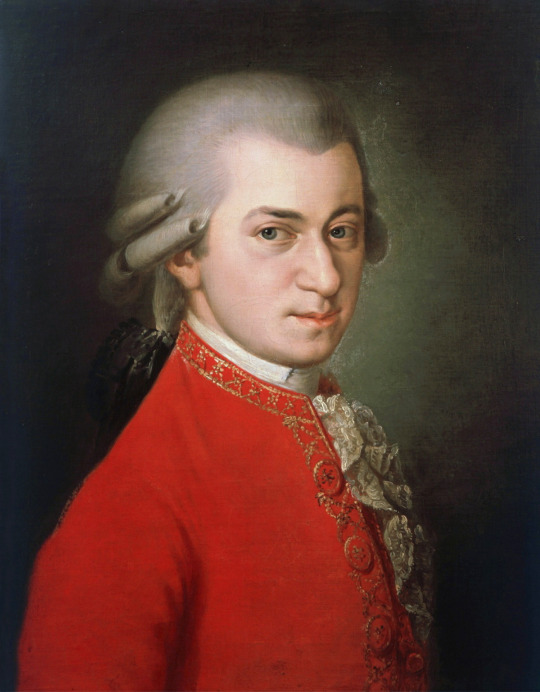
We all know of him and his profound use of musical composition in film and media in modern times.
Mozart was a prolific and influential composer of the classical era.Born in Salzburg, Mozart showed prodigious ability from his earliest childhood. Already competent on keyboard and violin, he composed from the age of five and performed before European royalty. At 17, Mozart was engaged as a musician at the Salzburg court but grew restless and travelled in search of a better position. While visiting Vienna in 1781, he was dismissed from his Salzburg position. He chose to stay in the capital, where he achieved fame but little financial security. During his final years in Vienna, he composed many of his best-known symphonies, concertos, and operas, and portions of the Requiem, which was largely unfinished at the time of his early death at the age of 35. The circumstances of his death have been much mythologized.He composed more than 600 works, many of which are acknowledged as pinnacles of symphonic, concertante, chamber, operatic, and choral music. He is among the most enduringly popular of classical composers, and his influence is profound on subsequent Western art music. Ludwig van Beethoven composed his early works in the shadow of Mozart, and Joseph Haydn wrote: "posterity will not see such a talent again in 100 years".
Source: Wikipedia
youtube
Ludwig Van Beethoven (1770 - 1791)

Beethoven was a German composer and pianist. A crucial figure in the transition between the classical and romantic eras in classical music, he remains one of the most recognized and influential musicians of this period, and is considered to be one of the greatest composers of all time.Beethoven was born in Bonn, the capital of the Electorate of Cologne, and part of the Holy Roman Empire. He displayed his musical talents at an early age and was vigorously taught by his father Johann van Beethoven, and was later taught by composer and conductor Christian Gottlob Neefe. At age 21, he moved to Vienna and studied composition with Joseph Haydn. Beethoven then gained a reputation as a virtuoso pianist, and was soon courted by Prince Lichnowsky for compositions, which resulted in Opus 1 in 1795.
Source: Wikipedia
youtube
Antonia Vivaldi (1678 - 1741)
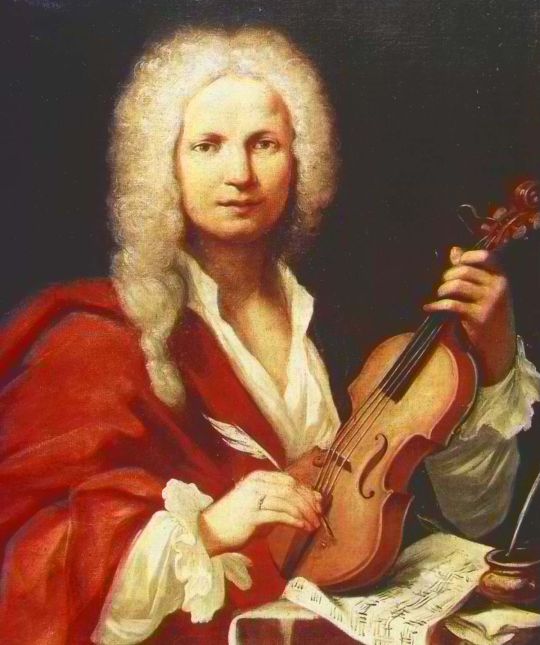
Vivaldi, the Baroque musical composer, virtuoso violinist, teacher, and priest. Born in Venice, the capital of the Venetian Republic, he is regarded as one of the greatest Baroque composers, and his influence during his lifetime was widespread across Europe. He composed many instrumental concertos, for the violin and a variety of other instruments, as well as sacred choral works and more than forty operas. His best-known work is a series of violin concertos known as the Four Seasons.Many of his compositions were written for the all-female music ensemble of the Ospedale della Pietà, a home for abandoned children. Vivaldi had worked there as a Catholic priest for 1 1/2 years and was employed there from 1703 to 1715 and from 1723 to 1740. Vivaldi also had some success with expensive stagings of his operas in Venice, Mantua and Vienna. After meeting the Emperor Charles VI, Vivaldi moved to Vienna, hoping for royal support. However, the Emperor died soon after Vivaldi's arrival, and Vivaldi himself died, in poverty, less than a year later.
Source: Wikipedia
youtube
The Classical Era sees the French Revolution

Formation of colonies

The American Revolution

Aristocratic Society

All forms of medium come around full circle back to Greek and Roman philosophy.
The Steam Engine is invented.

Benjamin Franklin discovers electricity

Oxygen is discovered

Encyclopedia Britannica is invented
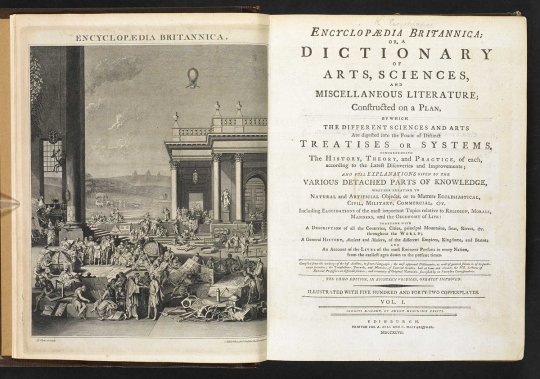
Vienna becomes the cultural center for all mediums of art

The Sonata Allegro form develops into the most common form of orchestral composition. Containing 3 major sections: The Exposition (1st theme, bridge transition, 2nd theme in a new key and the closing section), The Development (variations on themes in different keys), and the Recapitulation (the return to the 1st theme, the bridge in the same key, 2nd theme same as the 1st theme, the closing section and the Coda ending).
Symphonies have 4 parts called movements. First Movement is the Andante/Adagio or theme and variation. Second Movement is the Allegro, Sonata - Allegro form. Third Movement is the 3/4 minuet dance. The Fourth Movement is the Allegro/Presto, Sonata Allegro form and has no exposition repeat.
Beethoven used 4 notes in his first symphony. He also incorporated tempo variations to add suspense and emotion. He created art for the sake of creating art with much longer Codas. This allows the music to be more expressive. He sometimes would write what was call Sherzo, a comedic evil dance. It was all in dark humor though.
1 note
·
View note
Text
Music to Make Cats Sleep - Best Music For Cats
CATS AND MUSIC: WHAT YOU SHOULD KNOW
Music for Cats? Is there such a thing – and if so – what information do we need to choose the right kind?
Here is everything you need to know.
Music moves us as human beings.
This is due to the fact that the human brain sends all kinds of acoustic signals which are triggering emotions in the brain. But is the effect the same for cats and does it yield the same reactions?
All of these are questions that scientists and musicians have examined by performing tests on what influence music has on cats: A very positive one! – given, the right type of music is played.
But what exactly is the right kind of music for cats and why do they like it?
Can cats anticipate distinct tunes?
How do they perceive music?
Cats are excellent hunters, all their senses are refined for exactly that reason.
Not only do they know how to approach their prey soundlessly, they can also feel their environment via specifically sensitive hair on their front paws.
Thus, they perceive even the slightest of vibrations that we as humans normally would not even recognise – cats are purring seismographs!
In the animal realm, the hearing of cats is one of the best; it is developed to an extent that they can hear the slightest peep of a mouse.
Even in their dreams!
This is a matter of survival – because in the wild, they would become easy prey to their predators during nap time.
Music is always preceived by cats – even if noted down by the composer as “ppp” – pianissimo possibile (as low as possible).
Species-appropriate music
Scientists of the University of Wisconsin in Madison took a closer look and examined how different cats reacted on a variety of music initially composed for human ears only.
The result: There is a special kind of music which is pleasant to cats’ ears – not surprisingly, it is the type of sound best suited for their highly sensitive feline ears.
Orientated on cats’ sounds
So what tunes flatter your cat’s ears the most?
Scientist have found out that sounds perceived as pleasant during the first weeks of childhood remain the most enjoyable ones for cats throughout their lives.
When kittens come into this world, they are well fitted with a number of survival reflexes. However, in the beginning, they can’t see or hear. Only in the second week of their lives can kittens perceive their environment with all their senses.
Want to know more about a kitten’s development stages?
The first rhythms that a kitten perceives are the vibrations of their mother’s heartbeat, purring, or the drinking noises they make when sucking on their mom’s teats. These sounds are connected with comfort and security.
High frequencies
Cats’ feel-good music entails sounds connected to positive early-life experiences. Purring or sucking noises are therefore “top of the pops” for cats – they lead the feline charts, so to speak.
Cats like to communicate in rather high frequencies, since they simply like the sounds that are – in most cases – an octave higher than the human voice.
Anyone composing music for cats should therefore include instruments with a high pitch.
Perfect are the violin, cello and electronic keyboard instruments – with these, also beginners have a good chance of achieving a good spot in the cats’ top ten.
The right speed
But it is not only the tone which makes the music, dynamics and tempo also play a role!
For comparison: Purring creates 1000 beats per minute!
Based on the structure of purring sounds, frequency and tempo are most pivotal to making music which is pleasant for cats. This “purring speed” synchronises the heartbeat and allows our feline housemates to completely relax.
Cats don’t like noise
Music for cats should never be too loud.
Since cats have a much more sensitive hearing than humans, keep the volume down!
Aggressive sounds, repeating staccato rhythms and chords don’t sound right to your cat’s ear – they are definitely not techno, trash or heavy metal fans! – Stick to the headset to avoid stressing them out.
Many different instruments and a mix of tonalities are not the right thing either – you would not find multiphonic jazz combos in a cat’s record collection.
Which soothing music is right for cats?
Now you know what type of music is not well received. But what are the cats’ favourites?
What is the ideal chill-out music?
Is there any music which is not only pleasant but also de-stressing for cats?
For example, relaxing and sleep-enhancing music?
Classical music is often a safe choice: Baroque composers like Johann Sebastian Bach and Georg Friedrich Händel appease and relax our feline friends.
Soft classical music
Classical pieces are soothing not only for humans but also for cats. Tests have shown that music influences the vegetative nervous system which in turn controls the cardiovascular function. The kind of music we listen to even affects our blood pressure and breathing.
The soft, harmonious sounds also calm down our cats and lead to relaxed breathing and a well-balanced heartbeat – with some cats, even the pupils get smaller.
But which exact music has this effect? Not all cats like the same tunes – play a few pieces to your cat to find out about it’s taste.
Here are some examples that should have a relaxing effect:
Johann Sebastian Bach
Goldberg-Variations (BWV 988)
Ludwig van Beethoven
Moonlight Sonata (op. 27, Nr. 2)
Piano concert No. 4 G-major (op. 58)
Frédéric Chopin
Fantaisie-Impromptu (op. 66)
Claude Debussy
La Mer
Wolfgang Amadeus Mozart
Symphony No. 40 G-minor, 2nd movement (KV 550)
Maurice Ravel
Piano trio in A-minor
Camille Saint-Saëns
Symphonie Nr. 3 c-minor (op. 78)
Natural sounds and frequencies
If you are looking for soothing music for your cat, also try playing natural frequencies and sounds.
Natural sounds have a relaxing effect on both humans and cats.
A prime example is the sound of sea waves.
This frequency (twelve vibrations per minute) is perceived as soothing, as it resembles our breathing rhythm during sleep. It does therefore not only remind us pleasantly of holidays on the beach, we also – subconsciously – connect it with relaxation and rest.
Also our cats search for these natural sounds and vibrations, which to them send “pleasant” and “calming” signals. Certain music used for meditation practise may for example have the same soothing effects on both you and your cat.
Music composed for cats
Various scientists have meanwhile conducted research on the musical taste of cats. The results were used to compose special cat music related to the frequencies used for communication among the animals.
By adding some conventional musical elements, these compositions were then made “human-friendly”, so that we can also enjoy them. Then, they were played to cats.
– The test subjects were thrilled! And this is how it was done:
Composers like Oliver Kerschner, Charles Snowdown or David Teie created species-appropriate music using the research results.
Admittedly, some pieces may be a little hard to get used for human ears at first – but cats just love it!
“Music for Cats”– David Teie
David Teie is a professional cellist with the Washington National Symphony Orchestra and teaches at the University of Maryland.
Together with Professor Charles Snowdon, psychologist and expert for animal behaviour at the University of Wisconsin in Madison, he composed “Music for Cats”.
Cat fans from all over the world were enthusiastic and reported relaxed and soothed cats, caressing the loudspeakers!
You can get both the “Music for Cats” albums by David Teie here
Sensitive hearing
As opposed to eyes, ears unfortunately cannot be shut: Whoever shares a flat wit a cat knows when things are getting too loud for the feline housemate – a harmless vacuum cleaner may border unbearable conditions!
In that case, cats choose flight over fight – off to a quiet refuge.
Your cat’s hearing is extremely sensitive!
Even better than the hearing of a dog!
Their ears are like big, movable hearing aids, consisting of 64 single muscles (32 in every ear); with those they can point their ears quickly in all possible directions.
For this, they don’t even have to move their head.
High frequencies
Imagine, you have an amplifier implanted in your ear – hearing everything better and louder.
Cats hear a lot more than we do. They perceive sounds that we don’t even realise; much lower sounds for example, or other frequencies we are not aware of – mostly among the higher pitches. Humans only hear sounds between the frequencies of 16 Hz to 20 kHz.
Animals can hear ultra sounds of up to 20kHz to 1.6 GHz – too high a frequency for us to perceive.
Localisation of sounds
Nothing escapes a cat’s ear!
Outside or inside – even in the dark – cats know how to find their prey before the victim itself knows where it is.
The cat’s hearing does not only amplify sounds many times over – the animals can also estimate perfectly, where the noise is coming from; because their ears are extremely movable and can rotate to up to 180 degrees.
The sound hits the eardrum after having been transmitted by fine hairs, membranes and small bones through the ear canal, and signals to the cat’s brain, where the noise is coming from.
Bad hearing in old age
Cats can suffer hear-loss in old age, just the same as humans do.
This is mostly a matter of blood circulation; if the ears are not well supplied with blood any more, the cat will hear less. You will realise this e.g. by an increased jumpiness because they can’t hear you approaching – or even their meowing gets louder, as they can’t hear their own voice as well as they used to.
Most cats hear less after reaching the 10th year of their life. However, cats normally learn to cope with age-related loss of hearing and will find a way to work around it.
The other senses will take over part of the tasks and help out, so to speak; an older cat has a rich wealth of experience to fall back on and will know how to adapt to the new situation.
Music has a calming effect
Music influences emotions.
In many a vet’s practice, music will be used to calm animals down and make the visit easier for them. – And it works!
Certain types of music are known to be especially effective for calming cats. When cats hear this kind of music, you can tell, how quickly they relax – even fighting tom cats will calm down.
Playing relaxing music is also a good way of easing unknown or stressful situations. Prime examples are holidays like new year’s eve or long car trips – not very popular with many cats.
What music suits a cat?
Is there such a thing as cats’ music?
How about the musical “Cats”? Should our feline friends not go for it automatically?
Andrew Lloyd’s melodrama counts as the most successful musical of all times – and all the leading roles are cats!
But seriously, do cats really like the same music as we do – or do they perceive it entirely differently and therefore have a much different taste in music?
What counts as pleasant to them?
“What kind of music do cats like and what effect does it have on them?” – Many scientists have asked themselves the exact same question – and found an answer to it...
#music for cats#cat song#hear cat#do cats like music#relaxing music for cats#calming music for cats#soothing music for cats#memory song cats#songs for cats#music cats like#kitty music#kitten music#classical music for cats#cats and music#relax my cat#do cats enjoy music#boots and cats song#songs cats like#music cats love#calming music for kittens#cat in hear#do cats understand music#music to make cats sleep#best music for cats#what type of music do cats like#do cats hear music#cats main song#music made for cats#do kittens like music#cats and classical music
1 note
·
View note